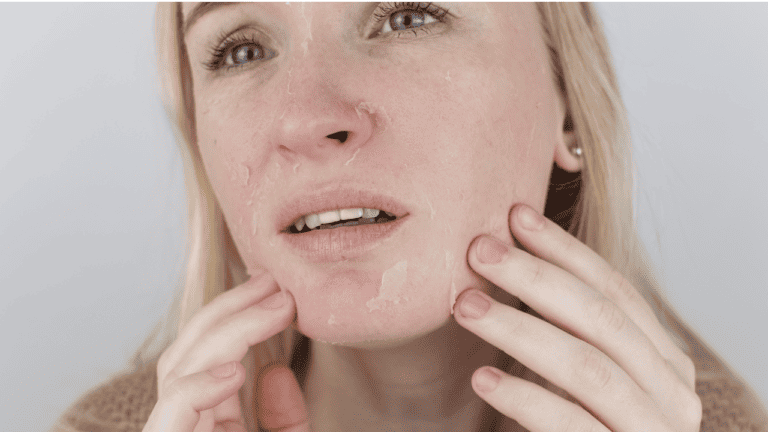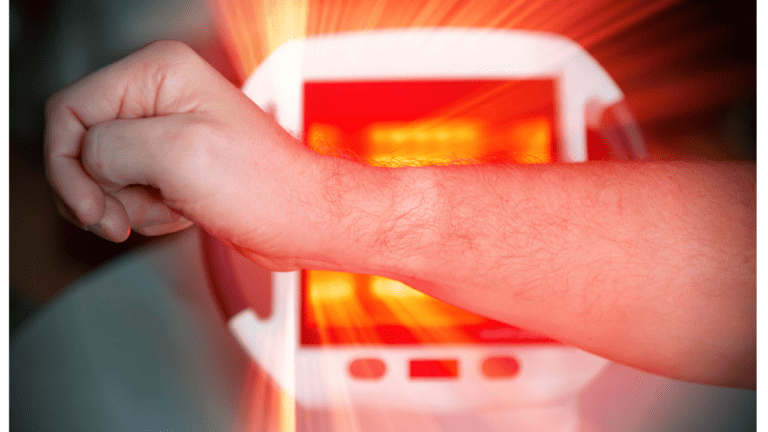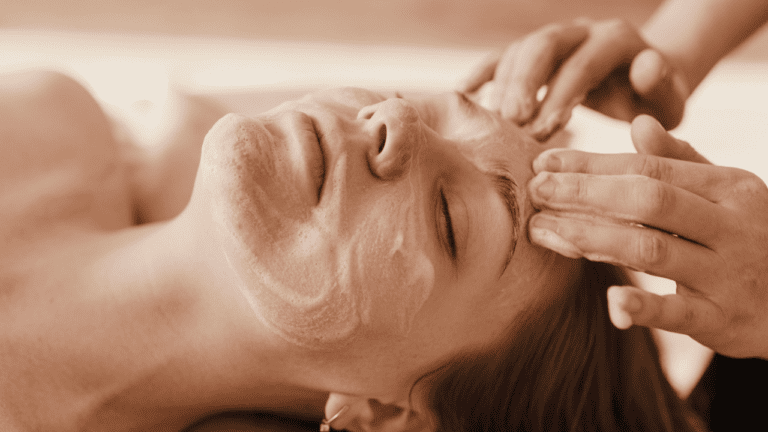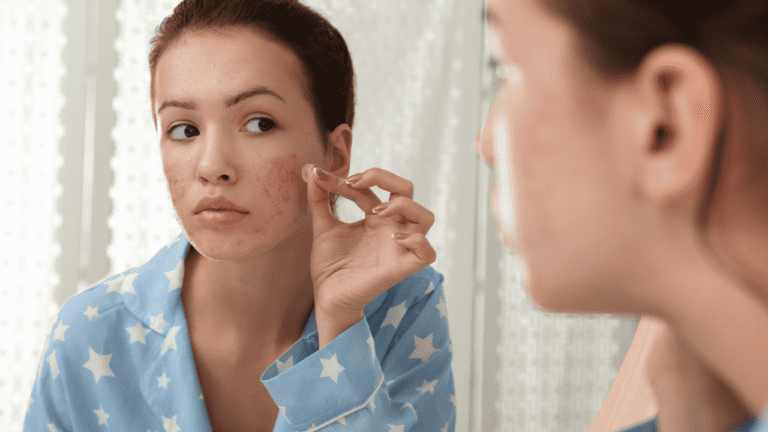Red light therapy is emerging as a popular and non-invasive treatment option for various health and skin conditions. Often used in dermatological clinics and wellness centers, Red Light Therapy harnesses low-level wavelengths of red light to penetrate the skin, providing therapeutic benefits. It’s widely recognized for its effectiveness in treating skin issues like acne scars, wrinkles, and healing wounds, as well as providing relief for muscle pain and joint stiffness.
How Does It Work?
The science behind red light therapy is fascinating. The red light, with its specific wavelengths, penetrates the skin and is absorbed by the mitochondria, the powerhouse of our cells. This absorption is thought to kick-start a series of biological processes that can help cells repair themselves, reduce inflammation, and increase energy production. Interestingly, Red Light Therapy doesn’t contain ultraviolet (UV) rays, making it a safer alternative to sun exposure for skin treatments.
However, while Red Light Therapy offers various benefits, it’s crucial to understand that it’s not suitable for everyone. Certain conditions and health scenarios may not align well with this therapy, necessitating a cautious approach or complete avoidance.
Key Takeaways
- Suitability and Safety: Consult a healthcare provider before using red light therapy, especially if you belong to any sensitive groups like pregnant women or those with certain medical conditions.
- Awareness of Side Effects: Be aware of potential side effects such as skin irritation, and seek professional guidance for personalized and safe treatment.
- Considering Alternatives: Explore alternative treatments if red light therapy is not suitable for your specific health situation.
Specific Groups Who Should Avoid Red Light Therapy

Understanding the Risks and Limitations
Red light therapy, though widely beneficial, is not universally suitable. Specific groups of individuals should exercise caution or avoid RLT entirely due to potential risks or adverse reactions.
Pregnant Women
Pregnancy is a time of caution when it comes to new treatments. The effects of Red Light Therapy on unborn babies are not thoroughly studied, making it a risky choice for expectant mothers. It’s always best to err on the side of caution and avoid such treatments until after pregnancy.
Photosensitive Individuals
Individuals with photosensitivity, a condition where skin reacts abnormally to light, should avoid Red Light Therapy. Exposure to the light can exacerbate their condition, leading to adverse skin reactions.
Those on Certain Medications
People taking photosensitizing medications, which increase the skin’s sensitivity to light, should also steer clear of Red Light Therapy. These medications can interact negatively with the therapy, leading to heightened skin reactions or other complications.
Cancer Patients
For cancer patients, particularly those with skin cancer, Red Light Therapy poses a significant risk. The therapy’s stimulating effects on cells can potentially interfere with cancer treatments or exacerbate the condition. It’s crucial for cancer patients to consult with their healthcare providers before considering Red Light Therapy.
Children
The safety and effectiveness of Red Light Therapy in children have not been extensively studied. Given their developing bodies and differing skin sensitivities, it’s advisable to avoid using Red Light Therapy on children.
Potential Side Effects of Red Light Therapy
Navigating the Downsides
While Red Light Therapy is generally safe, it’s important to be aware of its potential side effects. Most side effects are mild and temporary, but being informed helps in making an educated decision about using this therapy.
Common Side Effects
The most common side effects that rarely occur include mild skin redness, and minimal irritation, which typically resolve shortly after the treatment. Unlike UV light therapies, Red Light Therapy doesn’t cause skin burns or increase the risk of skin cancer.
Rare Side Effects
In rare instances, individuals may experience more severe reactions, such as pain at the site of treatment, blistering, or changes in skin pigmentation. If any of these symptoms occur, it’s essential to seek medical advice promptly.
Importance of Professional Guidance
To minimize the risk of side effects, it’s recommended to undergo RLT under the guidance of a trained professional. They can ensure the correct dosage and duration of exposure, tailoring the treatment to individual skin types and conditions.
Consulting Healthcare Professionals

The Importance of Professional Advice
Before embarking on any red light therapy treatment, it’s crucial to consult with a healthcare provider. This step is especially important for those who fall into the categories previously mentioned, such as pregnant women, individuals with certain medical conditions, or those on specific medications.
Discussing with Your Doctor
A conversation with your doctor should include your medical history, current medications, and any specific health concerns you might have. Your doctor can provide tailored advice on whether Red Light Therapy is safe and suitable for you. They may also offer guidance on the appropriate treatment frequency and duration to ensure both efficacy and safety.
Monitoring and Adjusting Treatment
Your healthcare provider can also help monitor your response to the treatment, making necessary adjustments along the way. This personalized approach is key to maximizing the benefits of Red Light Therapy while minimizing any potential risks.
Alternatives to Red Light Therapy
While Red Light Therapy is beneficial for many, it’s not the only treatment option available. Depending on the condition being treated, several alternatives may be considered.
For Skin Conditions
For skin concerns such as acne, wrinkles, or scars, alternatives to Red Light Therapy include laser therapy, chemical peels, or topical treatments like retinoids and antioxidants. Each of these treatments has its own set of benefits and potential side effects, which should be discussed with a dermatologist.
For Pain and Inflammation
For issues like muscle pain or joint stiffness, physical therapy, acupuncture, or anti-inflammatory medications can be effective alternatives. These treatments may be more suitable for individuals who can’t undergo Red Light Therapy due to medical reasons.
Weighing Pros and Cons
Each alternative treatment comes with its own set of pros and cons. It’s important to weigh these against your personal health needs and preferences. Consulting with healthcare professionals can provide valuable insights into which treatment option is best suited for you.
Wrapping Up Our Discussion
Red light therapy offers an innovative approach to treating a variety of conditions, from skin issues to pain relief. If you’re curious, you can more about Red Light Therapy from our Ultimate Guide To Red Light Therapy. Before you begin, it’s important to approach this therapy with a well-informed perspective.
Making Informed Choices
Understanding who should avoid Red Light Therapy and the potential side effects is crucial for safe and effective treatment. Consulting with healthcare professionals and considering alternative therapies where necessary can help ensure that you make the best decision for your health.
Embracing a Balanced View
While Red Light Therapy can be a valuable part of a treatment plan, it’s not a universal solution. Balancing its benefits against potential risks and contraindications is key to harnessing its advantages responsibly.
Staying Informed
As with any medical treatment, staying informed and up-to-date with the latest research and advice from healthcare professionals is important. This ensures that you continue to make the best choices for your health and well-being.
FAQs
How Long Does It Take to See Results from Red Light Therapy
Results can vary depending on the condition being treated and individual responses. Some may notice improvements within a few weeks, while others may take longer.
Is RLT Safe for All Skin Types?
Generally, RLT is safe for most skin types. However, individuals with photosensitive skin or those taking photosensitizing medications should avoid it.
Are There Any Long-Term Side Effects of RLT?
Currently, there are no known long-term side effects of RLT when used correctly. However, ongoing research is important for a more comprehensive understanding.






